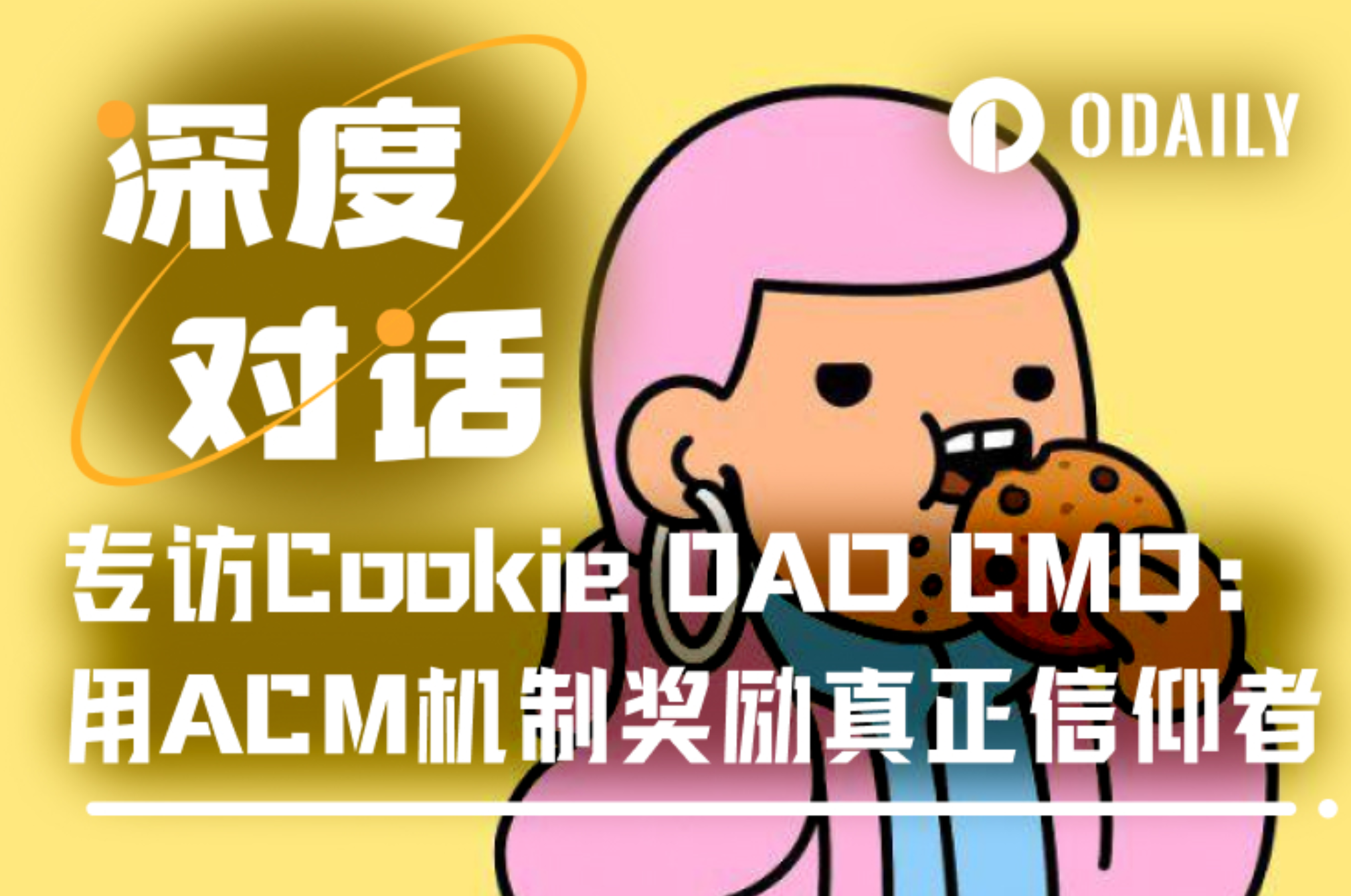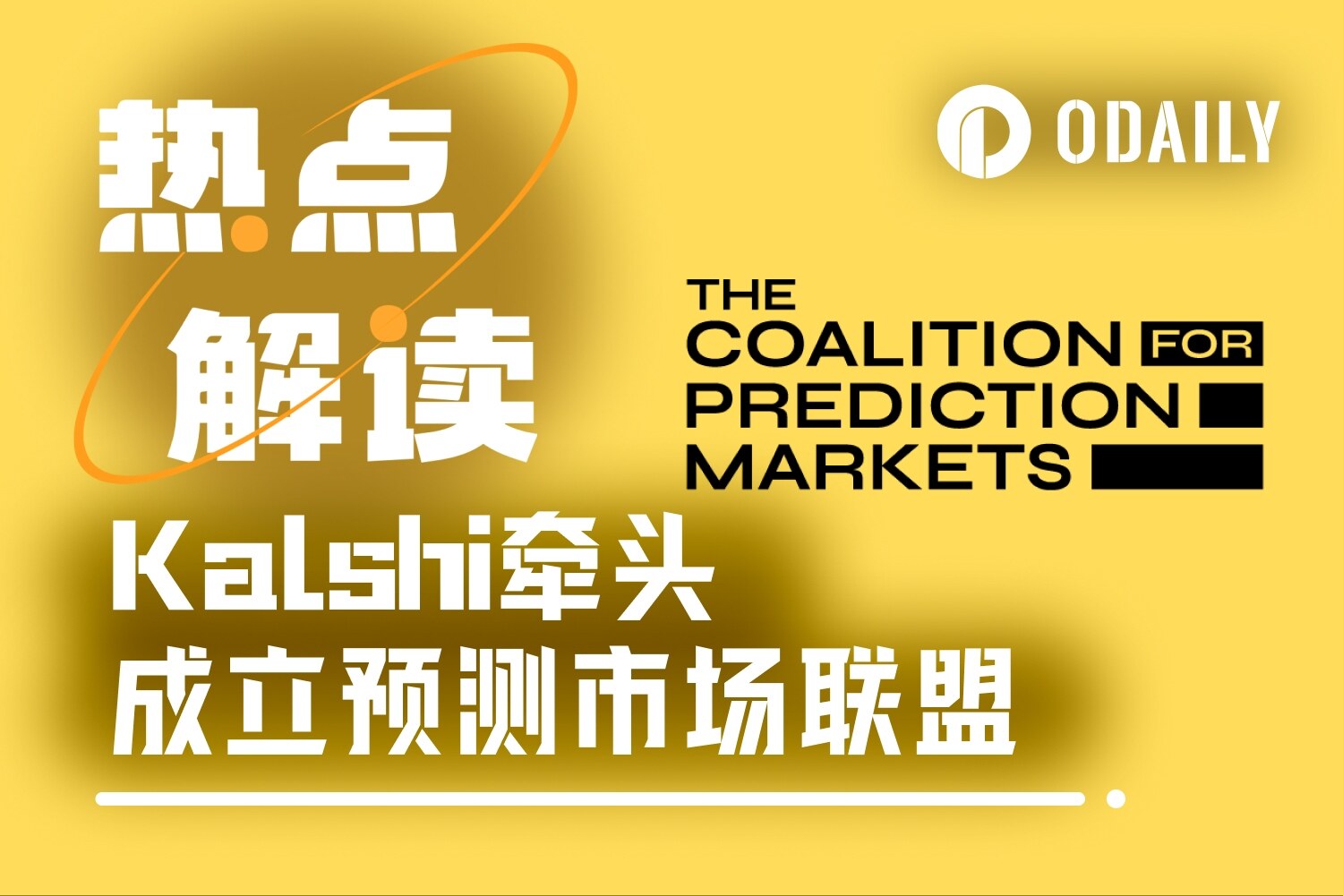Odaily interviews Cookie DAO: Using the ACM mechanism to reward true believers
- 核心观点:ACM机制创新激励真实用户。
- 关键要素:
- ACM结合社交与资本投入。
- 奖励池门槛35万美元。
- 质押者享双重收益路径。
- 市场影响:优化InfoFi激励结构。
- 时效性标注:中期影响。
Original | Odaily Planet Daily ( @OdailyChina )
Author | Asher ( @Asher_0210 )

As Ethereum's strong rise drives the continued recovery of the altcoin market, Cookie DAO, a popular "talking" platform, launched the ACM (Attention Capital Markets) innovative mechanism, trying to break the current imbalance of InfoFi rewards and allow "believers" who truly invest their attention and capital to obtain higher rights and interests. This is not only a mechanism update, but also a practical test of the possible future evolution of InfoFi: allowing users' attention and investment to truly transform into long-term rights and interests on the chain.
Odaily Planet Daily had the honor of having a conversation with Cookie DAO CMO Krystyna when ACM was launched. In this in-depth conversation, Krystyna explained the process of Cookie DAO's transformation from an initial data platform to the core infrastructure in the InfoFi field, and deeply analyzed how the ACM mechanism identifies and motivates user groups that truly have "belief and investment". At the same time, she also shared the team's thinking and practice in screening cooperative projects and coping with incentive imbalances in the InfoFi field, providing new directions and possibilities for InfoFi to move towards on-chain assetization.
The following is the transcript of an exclusive interview with Odaily Planet Daily, enjoy~
Cookie DAO was originally a platform for tracking AI Agent-related token information, market sentiment, and social content. Now it has transformed into a platform for analyzing crypto projects and KOLs and incentivizing high-quality CT content. What is the reason for this transformation? What trends or needs are driving it?
"Cookie DAO has always focused on building a strong on-chain data and social data infrastructure layer." This has not changed. What has really changed is how we apply this data. As market demand evolves, we are constantly thinking: How can data help users make better and faster decisions?
We started with AI Agent token tracking because that was the earliest need at the time. But as the attention market, KOL dynamics, and CT narratives have grown in influence, users' demand for in-depth analysis of projects and influencers has grown. So we made adjustments - based on the same core data engine, we developed a series of new tools and products to meet this demand. This flexibility is the driving force behind Cookie's commitment to building real-time, data-driven applications that can evolve with market changes.
The launch of Cookie Snaps has brought a lot of discussion to the platform. So how were the projects that launched Cookie Snaps previously selected? What indicators does Cookie DAO mainly focus on when selecting partners?
All projects listed on Cookie Snaps are subject to a rigorous due diligence process. First, we will confirm whether the project is willing to spend at least $350,000 for event rewards . A strong incentive mechanism is the key to attracting the Snapper community to participate, because user value is always our priority.
After confirming the incentive amount, we will conduct a comprehensive assessment of the project team background, token economic model, development roadmap and current progress to ensure that the project has long-term development potential rather than just short-term speculation. Only after passing this series of reviews will we enter the proposal and cooperation negotiation stage. Insisting on selecting high-quality, compliant and long-term planning partners is our core way to protect the interests of users and maintain the trust of the Cookie ecosystem.
Many users still do not fully understand the innovation of the newly launched ACM (Attention Capital Markets) mechanism. Could you take this opportunity to briefly introduce the core concepts and mechanisms of ACM?
ACM (Attention Capital Markets) is an innovative mechanism that aims to closely combine social influence with on-chain capital investment. Unlike the traditional InfoFi model, which only rewards users for posting and interacting, ACM pays more attention to users who can both create attention and truly support the projects they promote with funds.
By integrating Cookie's attention tracking tools with Legion's investment infrastructure, the ACM mechanism allows the most valuable contributors to participate in the project pre-sale with better conditions and receive higher-weighted airdrop rewards based on their true "belief" strength (i.e. actual invested capital). This is a mechanism that rewards "true believers" rather than simply "wool-pulling parties."
Previously, in the Cookie Snaps event, COOKIE stakers could obtain 10% to 20% of the cooperation reward share through the MAF pool. So under the ACM mechanism, can token stakers get more token pre-sale allocations?
Yes, COOKIE token stakers will continue to receive a 10 to 20% share of the ACM event reward pool through the MAF pool, just as they have in the past for participating in Cookie Snaps. But under the ACM mechanism, stakers can also unlock a new reward tier - returns from cSNAPS. cSNAPS are capital-weighted points used to obtain a share of rewards in the investor airdrop pool. Diamond and Platinum level stakers will automatically receive cSNAPS, and their number of SNAPS will be multiplied by the number of COOKIE tokens staked.
In short, staking COOKIE tokens can now enjoy both creator and investor reward paths, further enhancing its value in the ACM ecosystem.
So for projects that cooperated before the launch of the ACM mechanism, will users at the top of the Snaps list also be eligible for token pre-sale allocation?
No, token pre-sale quotas are limited to projects that partner with ACM activities. Such activities are carried out by Cookie and Legion in cooperation and are subject to independent due diligence processes by both teams. Projects launched before the launch of the ACM mechanism will continue to use the original Cookie Snaps standard structure.
All projects that meet ACM requirements and their corresponding pre-sale opportunities will be announced separately.
According to feedback from many users, the token shares airdropped by cooperative projects in the Cookie Snaps event are generally low. So after the ACM mechanism is launched, is it possible for subsequent cooperative projects to obtain a higher proportion of token allocation for users, such as 3%, 5% or even more of the total supply?
The specific size of the pre-sale quota is determined by the project, who will determine how much tokens they are willing to give to reward Snapper users based on their own strategies. Cookie only sets a bottom line: the total value of the event rewards must reach $350,000 to ensure sufficient user participation and market influence.
Of course, users should also pay attention to the long-term value of airdrops. For example, in the SPK event, a participant received an airdrop of about $3,000 at the time of launch, and then the value rose to more than $6,000 just by holding it. Therefore, although the quota ratio may be different, in actual benefits, holding it for a long time and holding it accurately are often as important as holding more.
Why did you choose Almanak as the first project after the launch of the ACM mechanism? What features of this project attracted you?
Almanak was chosen as the first ACM mechanism launch cooperation project because it performs well in all aspects, has a strong and credible team background, and provides very attractive investment conditions for top Snappers. Their pre-sale valuation is $90 million FDV, and the tokens will be 100% unlocked at the TGE, which is very competitive in the current market environment.
As the first project to receive funding in the emerging vibecoding track, Almanak is both innovative and compliant, bringing a promising opportunity to Snapper users and early believers.
Kaito is generally regarded as the main competitor of Cookie DAO. How do you view the positioning differences and possible synergy or competition between Cookie DAO and Kaito?
Yes, although Cookie DAO and Kaito are both building the InfoFi ecosystem, they have obvious differences in paths and concepts.
Kaito's model is more centralized , and users often have to pay to obtain complete data. At the same time, their Yaps system focuses more on providing exposure opportunities for paid projects. Cookie's approach is to open data to all users and projects , and is committed to achieving universal access to information and truly building a decentralized data layer. This is our core mission.
There are also differences in algorithms and incentive mechanisms. Cookie pays more attention to real creators and high-quality interactive signals, while Kaito's mechanism is more friendly to "brushing" behavior. This means that project parties can choose a more suitable cooperation platform according to their own needs. We believe that this diversity is healthy for the entire ecosystem. The launch of the ACM event has gone a step further and deeply integrated capital investment with the InfoFi layer. No longer relying solely on reputation thresholds to obtain pre-sale qualifications (such as Kaito's approach), but instead binding qualifications with the dual dimensions of "attention + investment", thereby more closely aligning the interests of creators, communities, and capital.
Finally, there is a fundamental difference between the two in the way user data is processed. Kaito stores user identity information, wallets, and social data in a centralized company system, while Cookie and Legion use a distributed architecture: Cookie only processes attention data, Legion manages capital-related information, and personal data is never centrally stored or shared across systems. This structure not only effectively protects user privacy, but is also built on Legion's proven pre-sale security infrastructure - this has not yet been market-verified in the Kaito system.
So although there is a certain degree of competition, we believe that the objects and needs served by the two models are not exactly the same, and may even be complementary in the long run.
As one of the most popular platforms in the InfoFi sector, what do you think is the biggest problem in the InfoFi sector? Is the introduction of the ACM mechanism intended to solve these pain points and provide the best solution at this stage?
The biggest problem with the current InfoFi sector is the misalignment of incentives. Most systems only reward users who make noise, posting content without real conviction or capital support, which leads to a lot of fake volume, low-quality interactions, and the rapid sale of airdropped tokens, and participants have no interest in the project itself.
The ACM mechanism is designed to solve this problem. It combines social behavior with actual capital investment to ensure that rewards truly belong to users who not only discuss projects, but also invest and believe in their long-term value. By eliminating participants with insufficient conviction and highlighting true believers, the ACM mechanism brings integrity, sustainability, and valuable signals to the InfoFi field.
Finally, how do you think the InfoFi sector will move from concept to assetization in the future, and from short-term "mouth incentives" to long-term "on-chain influence standards"?
The future of InfoFi lies in shifting the focus from a short-term incentive to a long-term on-chain asset class. Currently, most interactions are rewarded in the form of short-term incentives, such as likes, airdrops, and leaderboard points, but these lack lasting value and are difficult to reflect real influence.
In the future, attention will be assetized and become a verifiable proof of influence and belief on the chain, which can unlock more rights such as capital, governance, pre-sale, etc. Through ACM, we have taken the first step to combine social behavior with capital and give it quantifiable and meaningful value. Over time, this will evolve into a new on-chain reputation standard, making your signals, beliefs, and historical performance your assets that can be passed on throughout the ecosystem.



